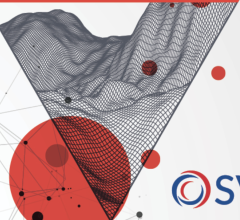
Getty Images
May 18, 2022 — Continuous monitoring with an insertable cardiac monitor (ICM) is shown to be more successful in detecting atrial fibrillation (AF) than conventional intermittent monitoring in patients with strokes attributed to large artery atherosclerosis (LAA) or small vessel occlusion (SVO). Findings from the STROKE-AF study compared incidence rates of AF between various intermittent monitoring strategies and continuous monitoring with an ICM. The study was presented at Heart Rhythm 2022 on Sunday, May 1.
Despite progress in stroke prevention, stroke remains the fifth most common cause of death in the United States.1 AF, a common heart rhythm disorder that can often go undetected, is known to increase the risk of stroke by five-fold and is a common risk factor, particularly in older adults. Prior studies show that AF can be an underlying cause in patients who have stroke of undetermined cause, known as cryptogenic stroke.2 Identifying the cause of a stroke is a critical step in preventing future or recurrent stroke in patients, so many patients with stroke of undetermined cause often undergo intensified heart rhythm monitoring in order to diagnose and treat AF as the potential cause.
Authors of the STROKE-AF study enrolled patients with a recent ischemic stroke attributed to LAA or SVO. Patients were 60 years of age or older (or 50-59 with heart failure, hypertension, diabetes prior stroke or vascular disease) and had no history of AF. The one-time monitoring strategies were simulated by computing the AF incidence using 1, 2 ,7, 14 and 30-day recording periods, while the repeated monitoring strategies (quarterly 24 h, 48 h, 7d, or monthly 24 h) were simulated over a 1-year period. The initial day for all simulations was randomly selected 1-14 days after ICM placement to ensure a uniform distribution, and repeated monitoring strategies were simulated 10,000 times with mean values and ranges reported.
As part of the study, data was obtained from 242 patients (age 66.6±9.3, 60% male, CHA2DS2- VASc 5.0 [IQR4.0- 5.0]). In these stroke patients whose stroke did not appear to be due to an abnormal heart rhythm, the study found that continuous monitoring with ICM detected AF in 1 in 8 patients by 12 months. The AF incidence rate through ICM was 11.57%, exceeding the estimated rates from all forms of modeled intermittent monitoring (range 0.22-2.55%, p<0.001)
“Traditionally, we have focused our efforts with AF screening in patients who had no clear cause of their stroke. STROKE AF highlights the importance of diagnosing atrial fibrillation even in patients whose stroke appeared to be due to LLA or SVO,” said Jonathan Piccini, MD, MHS, FACC, FAHA, FHRS, associate professor of medicine and director of cardiac electrophysiology at Duke Unviersity. “These findings add to the growing evidence that highlight the importance of continuous cardiac monitoring inpatients who are at-risk for atrial fibrillation, regardless of what may have caused their first stroke.”
Individuals who have AF and a history of stroke receive a Class I recommendation for oral anticoagulation to prevent future stroke. The authors believe that even with the most aggressive forms of intermittent monitoring, a large proportion of patients with AF would not be diagnosed or could go untreated, and that their findings emphasize the importance of avoiding another episode of stroke, no matter the cause.
For more information: www.hrsonline.org
Click here for more Heart Rhythm 2022 coverage.
References:
1 Taso CW, Aday AW et. al., “Health disease and stroke statistics – 2022 update: a report from the American Heart Association”. Circulation. 2022;145:e153–e639. DOI: 10.1161/CIR.0000000000001052
2 Gladstone, David J., Spring, Melanie, et al., “Atrial Fibrillation in Patients with Cryptogenic Stroke.” N Engl J Med 2014; 370:2467-2477 DOI: 10.1056/NEJMoa1311376


 June 08, 2023
June 08, 2023 
